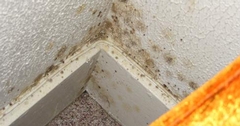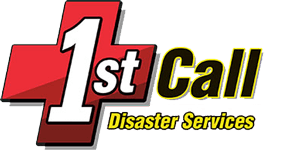Blog Post
All About Mold Series – #1 Understanding How Mold Thrives Can Help Us Prevent Mold Growth In Your Home or Business

Mold must have at least two things to spread and thrive: a moist or wet environment and an organic food source. Stagnant air is a third element that can elevate the opportunity for mold to grow even faster. Contrary to popular belief, high or low temperatures can contribute to the pattern but mold can grow in either. Coldness may slow it down but is not guaranteed and heat may contribute to exponential growth speeds but again that is no guarantee either. There are some 100,000 species of identified mold…and countless others that may never be identified. Mold is a living organism and continues to evolve. So to say, "I'm allergic to mold" is, at best, a blanket statement.
What is Mold?
Molds are living organisms that are not classified as a plant or animal. They are part of the fungi kingdom.
How Does Mold Grow?
The process by which molds grow is much different from a plant or an animal. Molds do not need sunlight to grow, in fact the sun's ultraviolet light can work to inhibit the growth of some molds. As stated above, mold needs elevated moisture levels. Wherever elevated moisture is present, the likeliness of mold is also present. Mold also needs oxygen and an organic material to provide the nutrients to grow.
What Does Mold Do?
Molds role is to break down decaying organic matter. This includes: dead animals, dead plants, leaves. Mold digests the matter they are growing on causing it to decompose. So are all molds evil or harmful? No. Some molds are actually useful. Foods like cheese, sausages, breads and soy sauce, for example rely on certain species of mold to add flavor to the food. In fact some sherries and wines require mold to add a specific flavor.
Where Does Mold Grow?
In a home or business, mold can be found on carpet, clothes, drywall, wood, insulation, paper, leather, food and even on concrete! Yes, concrete! But the concrete is not the source the mold is feeding upon to survive. It is the dust and/or other organic material on the concrete that is supporting the fragile life. Outside of the home, mold can be found in wood, soil, decaying plants, crawl spaces and in the air you and I breath every single breath.
Are all Molds Toxic?
Absolutely not. In fact, not even all black mold is toxic. There are thousands of different mold species. About 16 of the different identified mold species are known to be toxic. The following are the most common toxic molds that release mycotoxins, which generally pose hazards to humans and animals:
- Fusarium
- Aspergillus
- Stachybotrys
- Paecilomyces
- Penicillium
- Trichoderma
If you suspect mold growth in your home, it is best to have your home's air quality tested before making any drastic decisions and wasting hard earned money. Keeping in mind that every home has mold in it and one breaths mold spores with every breath. It is important to address mold issues if, in fact, rapid mold growth is noticed. PLEASE NOTE: Only a qualified physician can assist one in diagnosing whether or not a particular mold species is contributing to health issues or not.
How to Prevent Mold Growth?
The best preventative measure is to keep your home dry and prevent water from entering your home. If you suspect a leak in your home, have it repaired immediately. Mold can grow in as fast as 24-48 hours under certain conditions and depending upon the species. However, it is more common for molds to begin propagating more rapidly after lengthier periods of time. The problem is that in any given area there could be 30-50 species of mold in the area the size of a 1" x 1" square. Thus, it is best to address it as quickly as possible.
What Should I Do If I See Rapid Growing Mold?
While it is reasonably legitimate statement to say that one is allergic to mold, it is far too broad of a statement to jump to irrational conclusions and set off alarms unnecessarily. It is more important to address the issue causing the mold first while simultaneously containing the rapidly expanding growth area. If there is a suspicion that it is causing health issues, please consult with your physician. If it is a visible and rapidly expanding area, then call a mold remediation specialist so they can properly coach you in which steps are the most prudent and cost effective to solving the problem. An Indoor Environmental Professional (IEP), maybe be necessary but not always
1st Call Disaster Services can help individuals discern this answer and potentially save money, time, senseless worry and bring back peace of mind to your home or business. A good restoration company can make sure mold removal is done right and that you're out of pocket damage liability is kept to a minimum. We've helped numerous home and business owners and they and their insurance company always appreciate our surgical approach to restoration!
All About Mold Series
- All About Mold Series - #7 When and Why to Test for Mold
- All About Mold Series - #6 What Happens and What to Expect During a Mold Inspection
- All About Mold Series - #5 Signs That You May Have Mold In Your House
- All About Mold Series - #4 A Detailed Look at Mold Remediation
- All About Mold Series - #3 The Health Effects of Mold
- All About Mold Series - #2 Detecting and Removing Mold. Can Mold Make Me Sick?
- All About Mold Series - #1 Understanding How Mold Thrives Can Help Us Prevent Mold Growth In Your Home or Business
